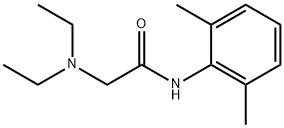| Usage | Lidocaine is a local anesthetic, also known as Xerocaine. It has replaced procaine in recent years and is widely used in cosmetic plastic surgery for local infiltration anesthesia. It inhibits the sodium ion channels in the nerve cell membrane. Cut off nerve excitation and conduction. Its fat-solubility and protein binding rate are higher than procaine, its ability to penetrate cells is strong, its effect is fast, its effect is long, and its strength is 4 times that of procaine. It is clinically used in infiltration anesthesia, epidural anesthesia, surface anesthesia (including mucosal anesthesia during thoracoscopy or abdominal surgery) and nerve block. In order to prolong the time of anesthesia and reduce the side effects such as lidocaine poisoning, can be added to the anesthetic. Lidocaine can also be used to treat ventricular premature beats, ventricular tachycardia, digitalis poisoning, cardiac surgery and cardiac catheter-induced ventricular arrhythmias after acute myocardial infarction, including ventricular premature beats, ventricular tachycardia and Ventricular fibrillation. Secondly, it is also used for status epilepticus for those who are ineffective with other anticonvulsants and for local or intraspinal anesthesia. But it is usually not effective for supraventricular arrhythmia. |









